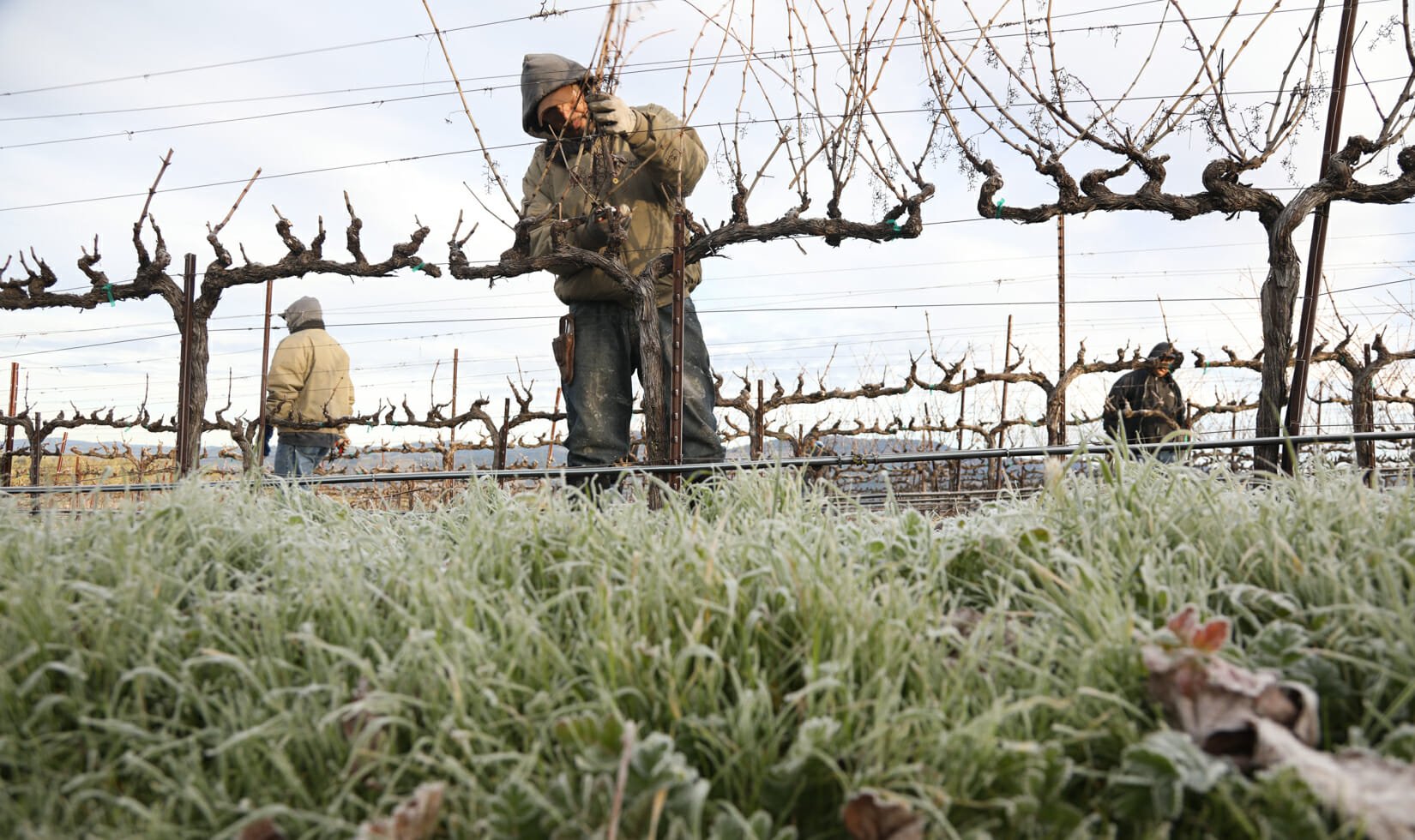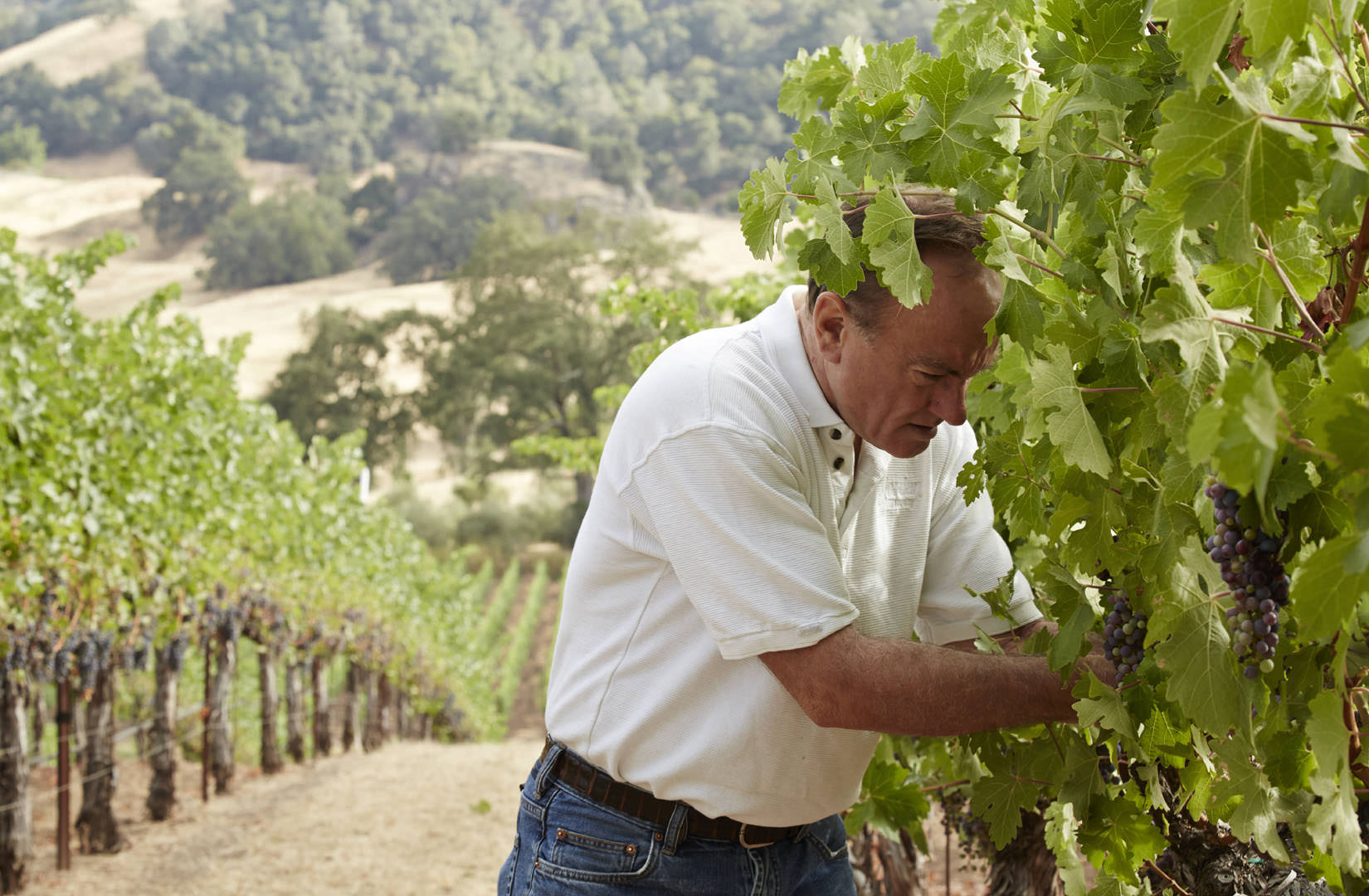Youve heard the winemaking adage, Great wine begins in the vineyard, and there are no truer words spoken. To ensure upper quality fruit, vineyard managers and winemakers remain on zestful year-round to ensure the grape growing process produces optimal quality fruit for the weightier wines possible. From pruning in the winter to night harvesting in the fall, in this post we outline all the steps we take for the year-round growing season in our vineyards that create the succulent wine in your glass.
Winter in the Vineyards
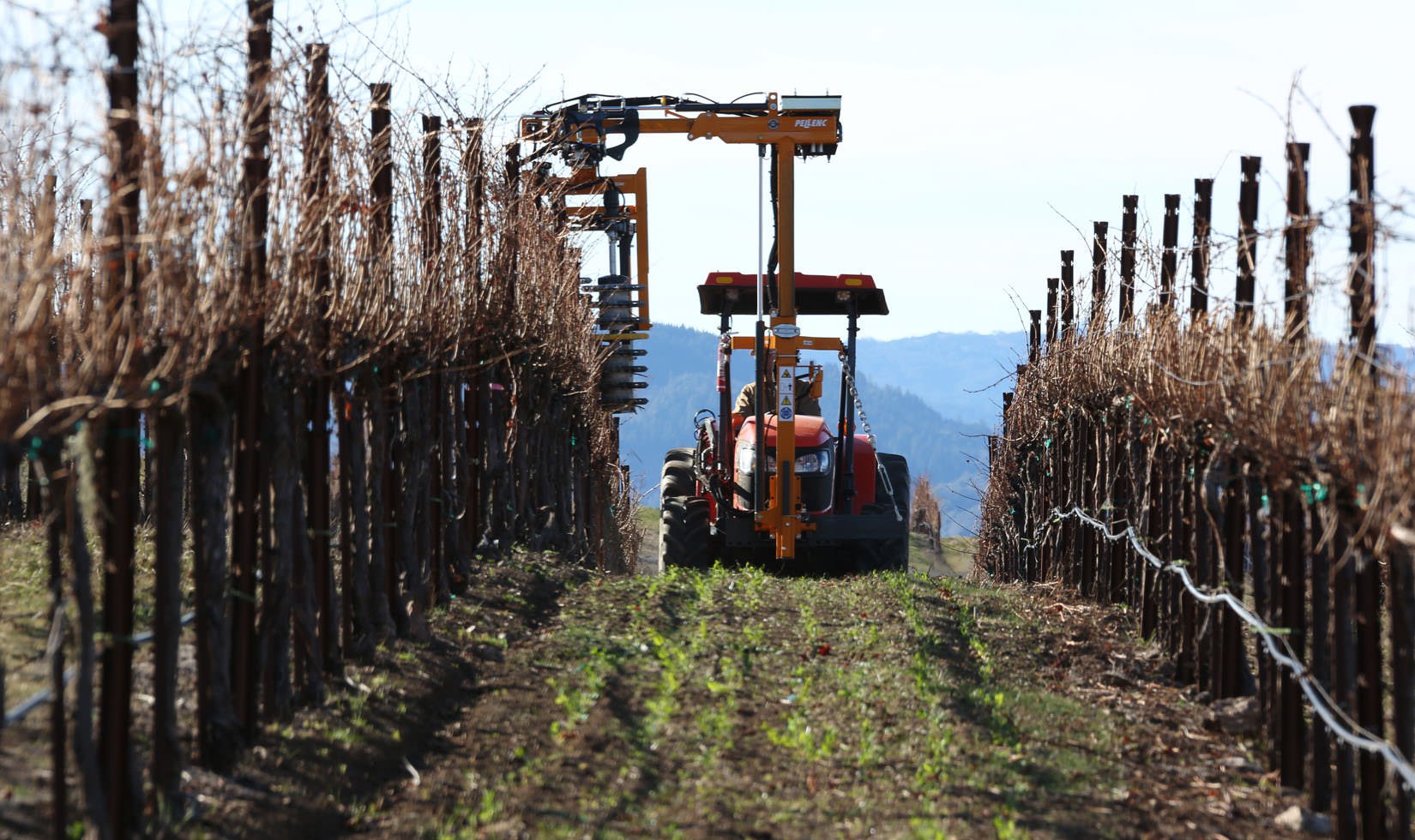
In the colder months, time seems to stand still when the vines are dormant. Rain falls, gray skies loiter above, and this time of year offers a meditative Zen-like quality. The vines are sleeping. While last years leaves remain untried on the vine, valuable carbohydrate reserves — ripened through photosynthesis — are squirreled yonder in its woody trunk and roots. This energy source will prove vital in the spring when the vines wake from their winter slumber.
Read increasingly well-nigh what happens to the vines during winter >>
Grape Growing Process: Grapevine Pruning
This unseeded period presents the platonic time to prune the vineyard for next years harvest, a necessary step for upper quality fruit. Like winemaking, grapevine pruning is part science, part art, and doing it right determines the size of the harvest and the quality of the wine. Last years canes, which are now surrounded by a layer of wood, are removed to facilitate fresh new growth. The work is laborious and expensive — it takes four people working nine hours a day, six days a week for well-nigh three months to prune Jordans 120 manor vineyard acres.
Watch a video showing how we prune our vineyards >>
Fall to Spring Imbricate Crops
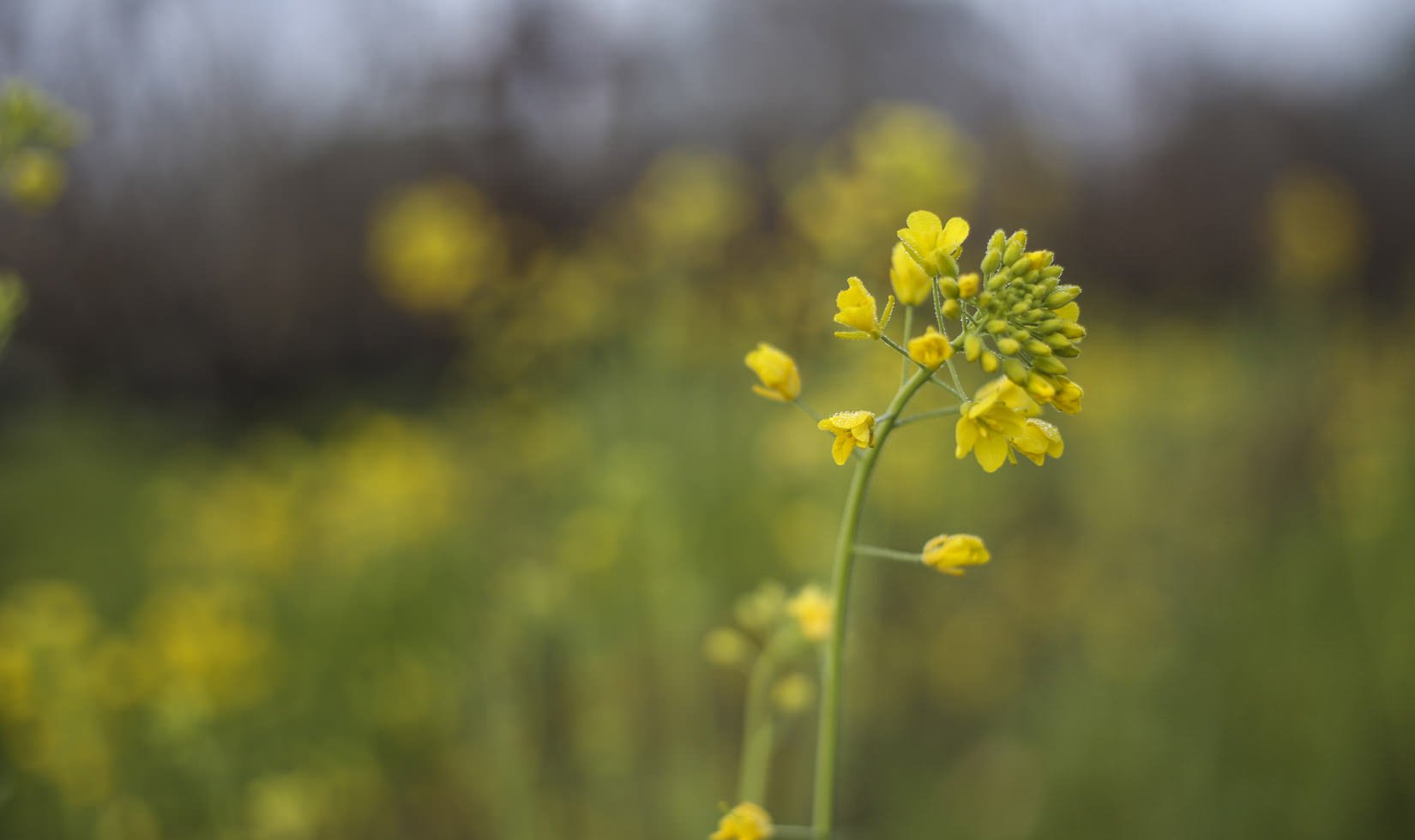
A key part of our sustainable farming program at Jordan is planting imbricate crops. Their benefits are vast — promoting salubrious insects in the spring vineyards, permitting us to reintroduce�organic nutrients when into the soils, regulating the growth of specific grapevines to enhance vine uniformity, limiting grape size to concentrate flavors, and help naturally tenancy erosion in the vineyards.
Watch our video on the many benefits of imbricate crops >>
Grape Growing Process:�Bud Break
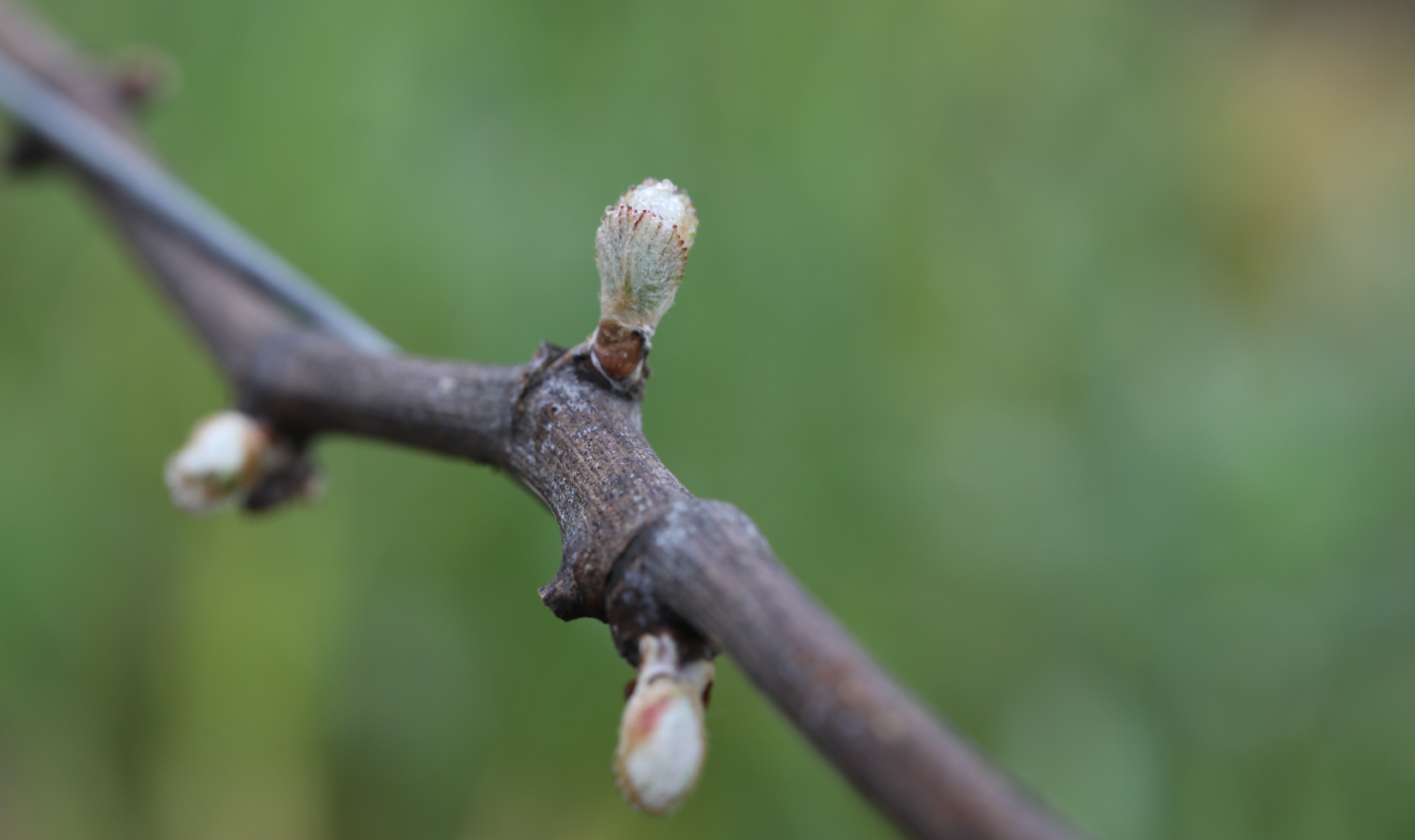
One of our favorite periods in the grape growing process, bud unravel is that magical moment each spring when the vines wake up from their winter nap. In the colder temperatures, grapevines towards lifeless and bare, but as the weather warms and the days lengthen, they come working with vitality. They pull from the energy stored within their trunks and roots through the winter and push out the first untried leaves of a new growth cycle. Its incredible to see.
Watch our video showing bud unravel >>
Grape Flowering
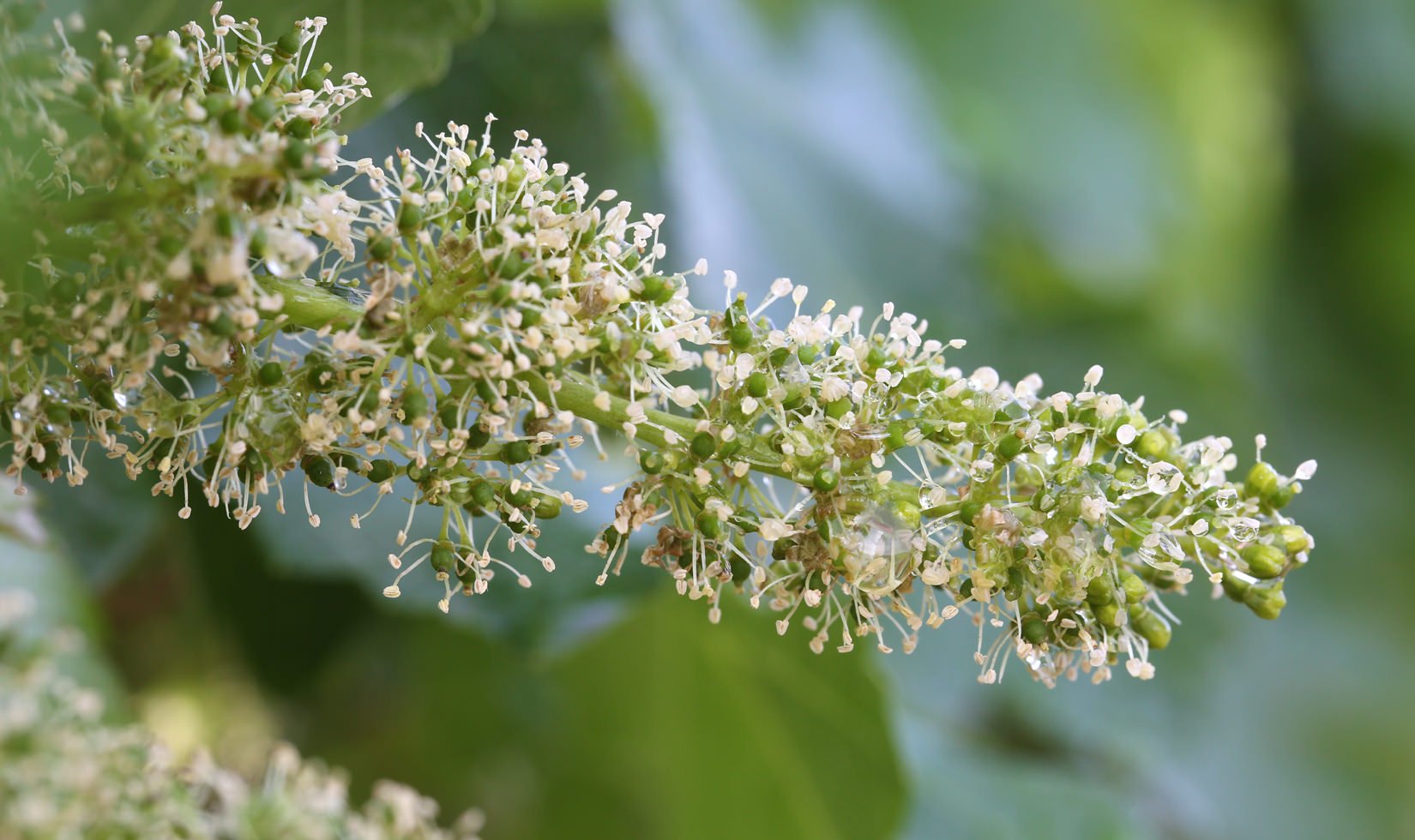
While we all want an well-healed fall harvest, the stages leading up to this yearly bounty are hair-trigger to success. Little grape flowers victorious in late spring, 40-80 days without bud break, depending on the climate. In order to show up to the party, grape flowers need an stereotype daily temperature of 59-68 degrees Fahrenheit, normally sometime in May in Sonoma County. Its during this stage of a grapes lifecycle that pollination and fertilization happens, with the results ultimately producing the cluster we all know and love.
Learn increasingly well-nigh grape flowering >>
Grape Growing Process:�Fruit Set
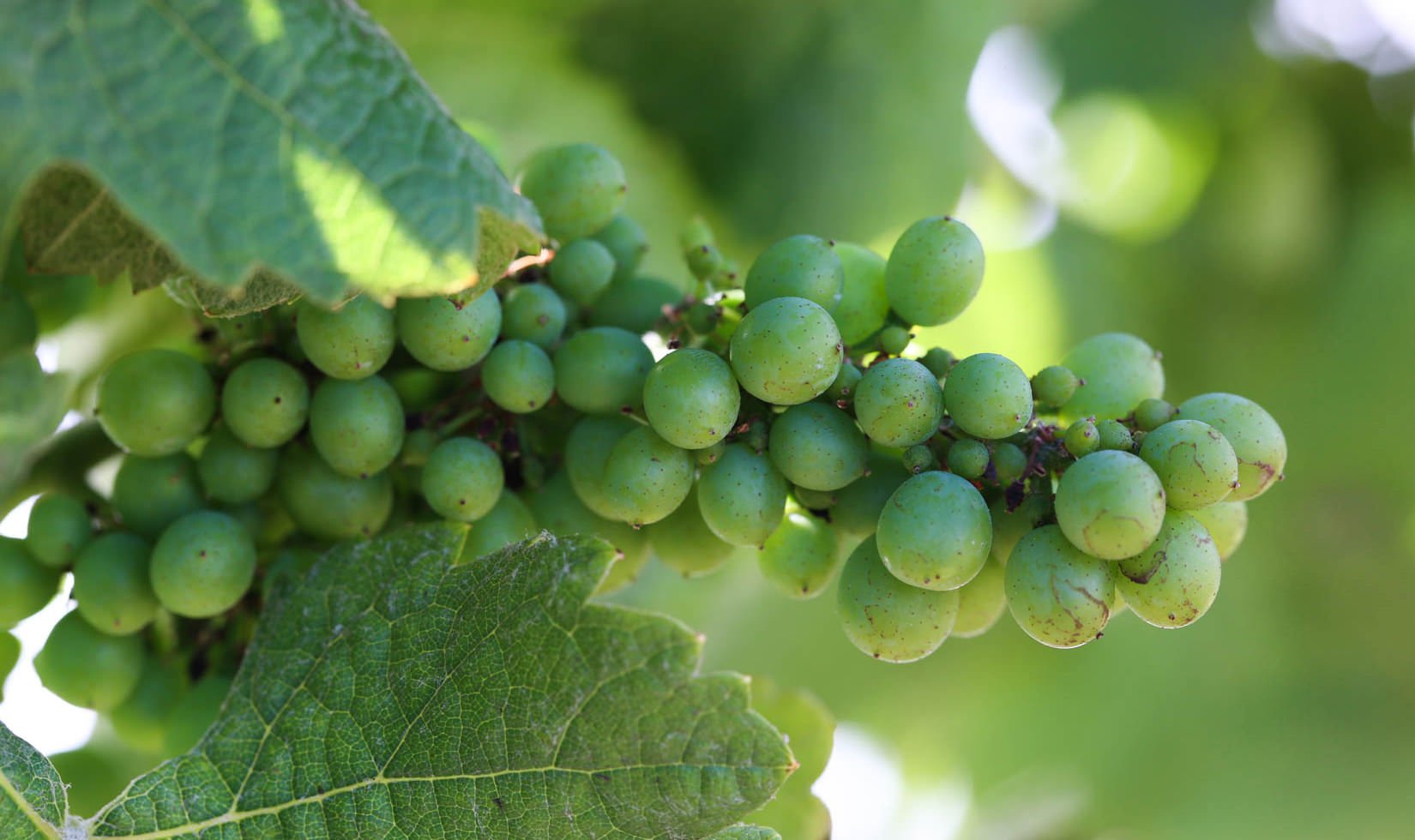
Once the flowers are pollinated in the spring, the grape berries form and uncork to grow whence virtually June in Sonoma County. This stage of the grape growing process happens at slightly variegated periods for white and red grape varieties. The growing regions microclimates moreover factor into it. White chardonnay grapes grown in the potation Russian River Valley tend to flower and wits set fruit in mid-May, virtually a similar time that our merlot grapes flower in the warmer Alexander Valley. Cabernet sauvignon flowers much later, well-nigh 2-4 weeks without early-ripening grapes.
See our gallery of fruit set images >>
Shoot Thinning
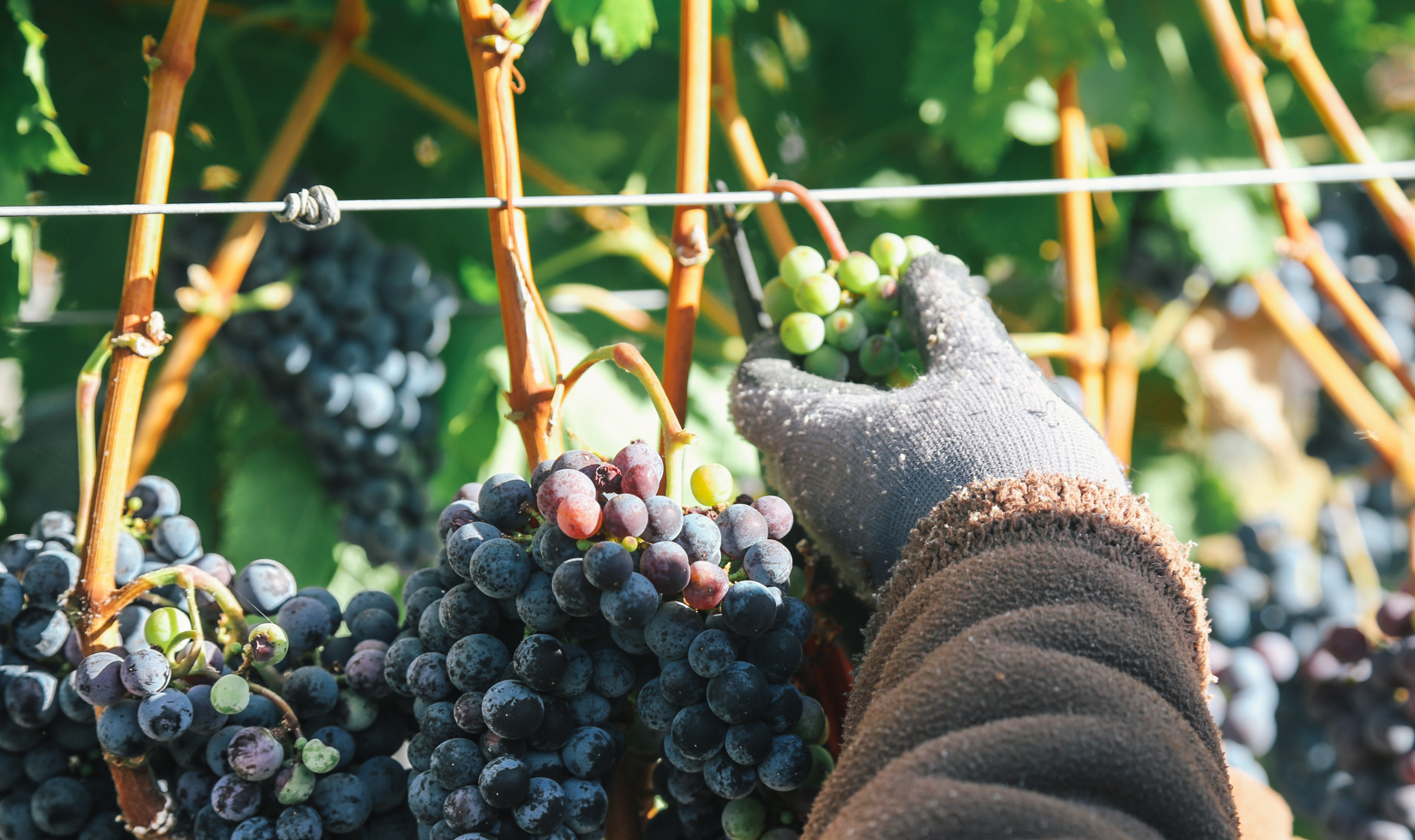
A late spring or early summer activity, shoot thinning or suckering represents a crucial step in quality winemaking. This process allows filtered light to reach the inside of the canopy, profitable with the grapes savor minutiae during ripening. This task moreover facilitates largest air movement within the clustera natural prevention for fungal diseases, such as botrytis�and powdery mildew. Each growing season, our viticulture team makes at least one pass through the vineyards to remove unwanted shoots from the vines by hand. But in some rainy years, the vines require two shoot-thinning passes in order to redirect the vines energy toward fewer shoots and thus less clusters of grapes to concentrate flavors.
Watch our video on how shoot thinning is important >>
Grape Cluster Counting
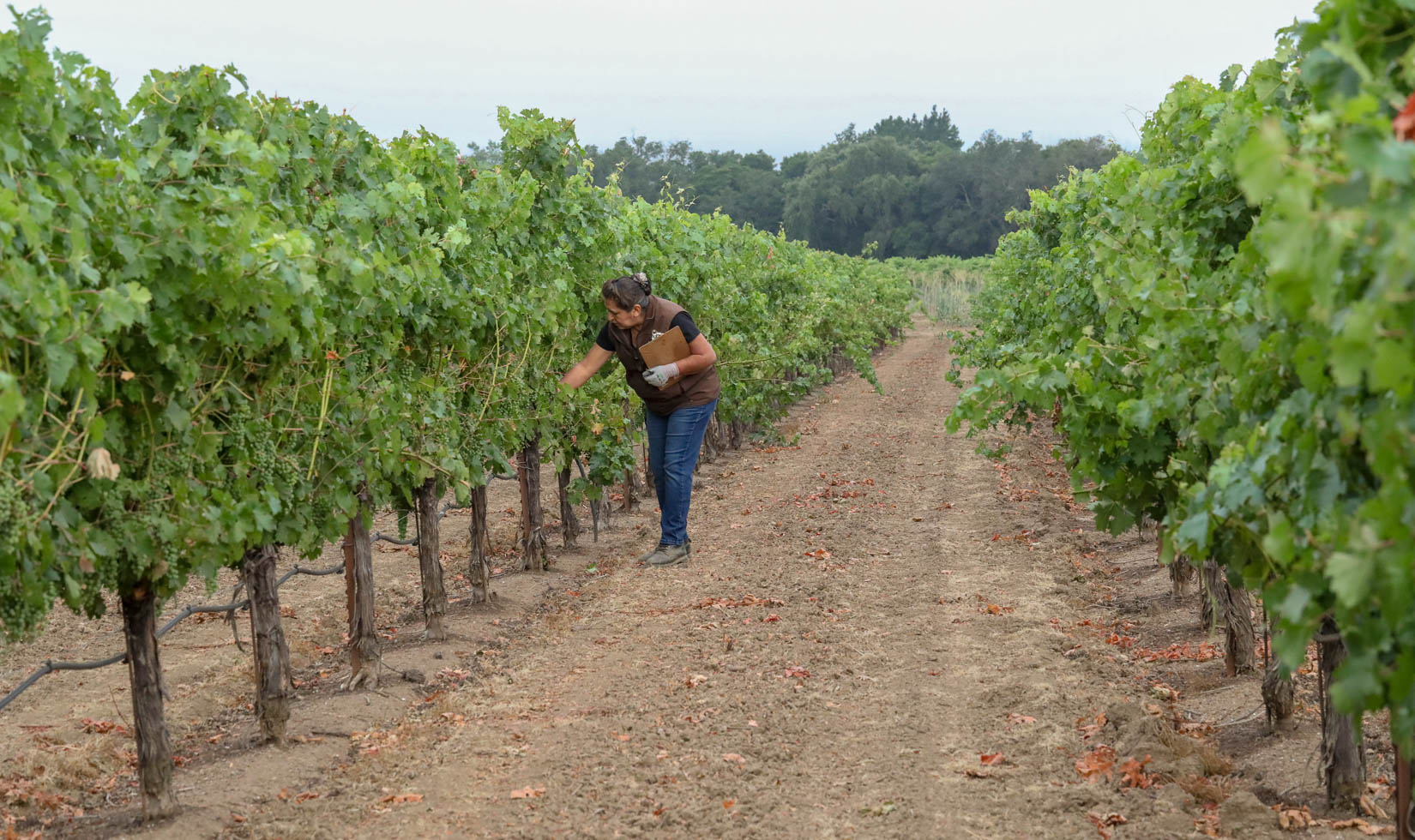
Summer equals math time in the vineyard, when grape cluster counting takes place. This grape growing process of walking through vineyards (literally, with a clipboard) determines the potential yield size for that years harvest.�If the grapes towards smaller or the clusters are loose, the crops weight could be unelevated stereotype and stupefy how much juice can be pressed from the fruit during harvest. On the flip side, larger clusters indicate increasingly juice inside the grapes.
Learn increasingly well-nigh grape cluster counting >>
Grape Veraison
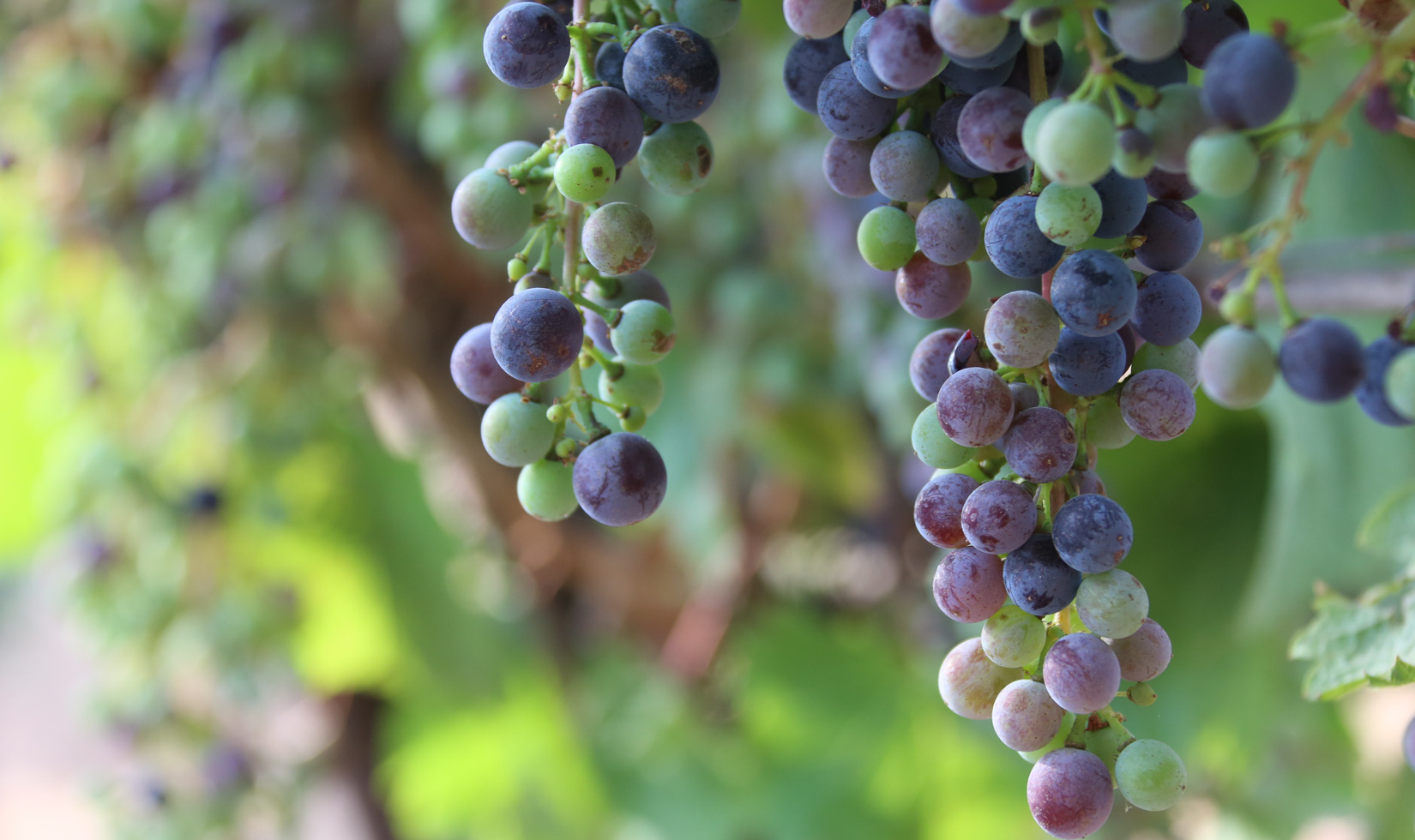
In mid-summer, grapes uncork to transpiration from untried to rosy to red in our vineyards, depending on the varietal. At the whence of ripening, grape veraison represents a period of the vines yearly lifecycle when the red grapes transpiration from untried to purple hues. Veraison, French for the onset of ripening, usually begins in July in moderate weather years, but in potation years, red grapes sometimes dont uncork this grape growing process until August. As a unstipulated rule, the time from coloration to harvest is typically well-nigh six weeks. But theres much increasingly to grape veraison than the fascinating verisimilitude transpiration we can see with our eyes.
Read increasingly well-nigh grape veraison and watch our time lapse video >>
Grape Growing Process: Sampling
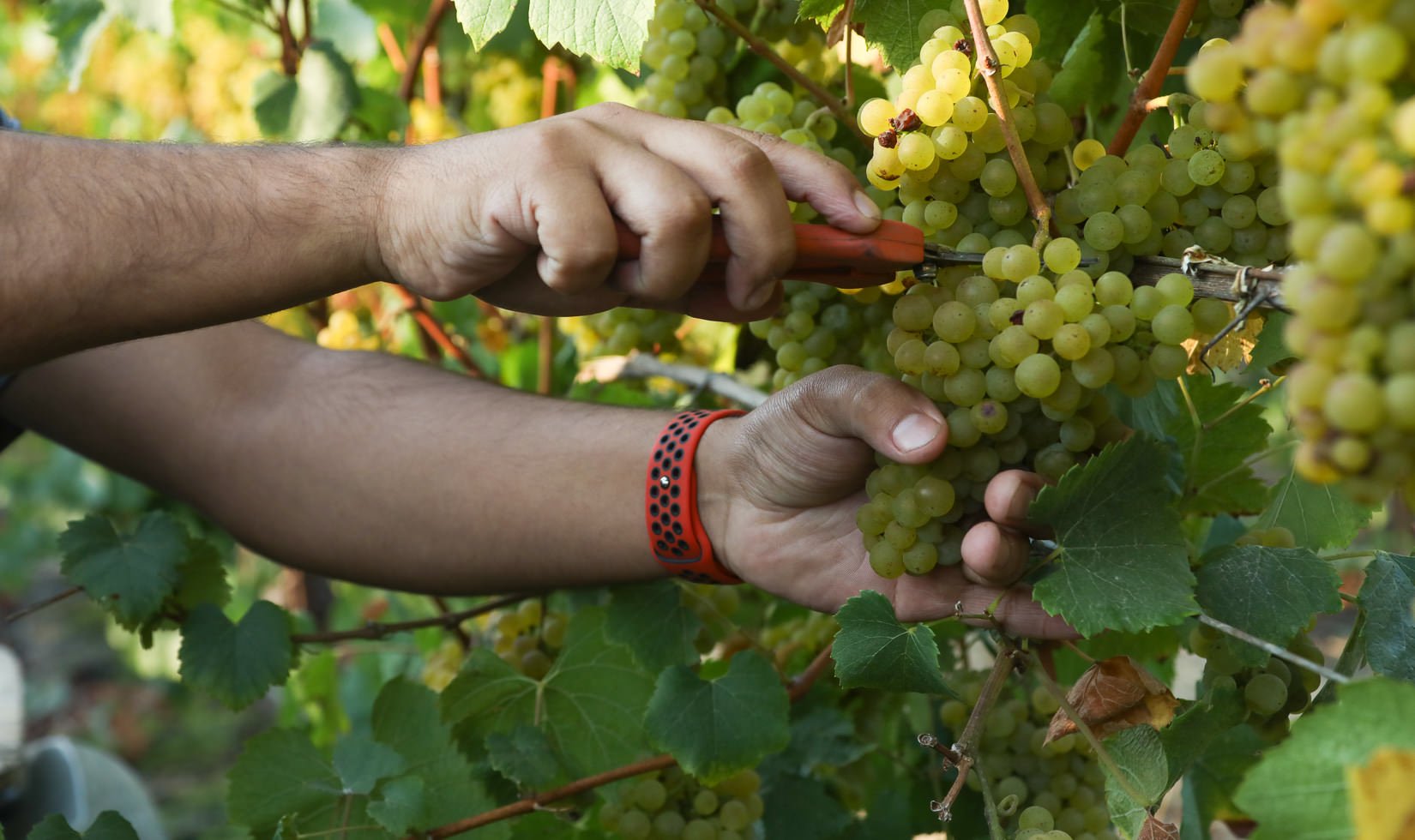
Perhaps the biggest judgment a winemaker makes each vintage is when to harvest the wine grapes. The wounding and sugar levels of the freshly picked grapes heavily influence the potential of a wines greatness, as well as the value of work and sustentation needed to coax�the wine�to the desired level of quality. There are many methods of estimating when a vineyard is ready to be harvested, and most wineries start by grape sampling — literally walking each vineyard and picking select clusters to analyze. This process begins roughly four weeks surpassing the expected harvest date.
Watch our video well-nigh the wine grape sampling process >>
The Grape Harvest
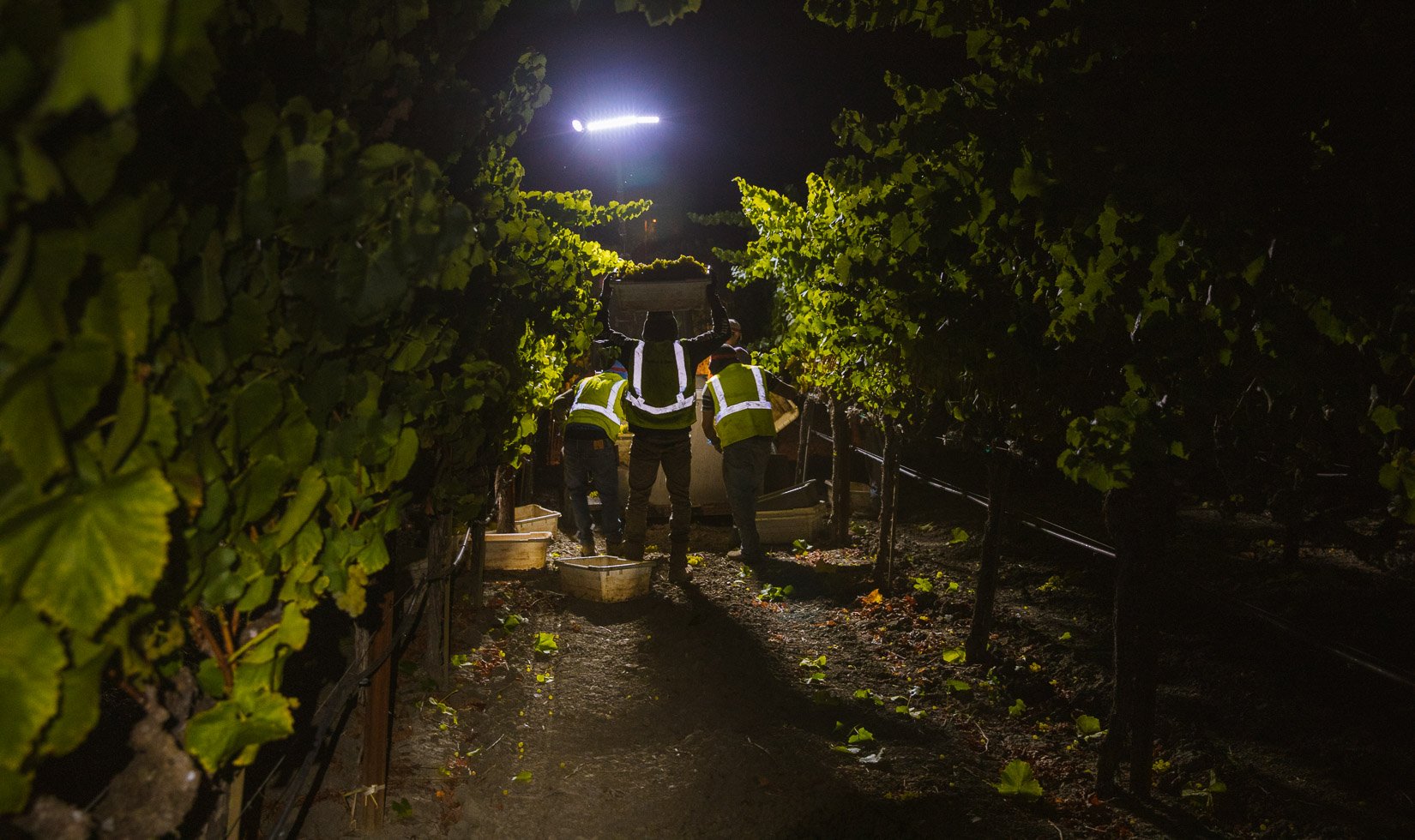
The real fun begins when harvest finally arrives. Experiencing night harvest is a thrill for anyone who loves wine grapes. You can see your breath, the grapes finger unprepossessed and the dank air is thick with a wet fog. Night harvest of Bordeaux wine varieties like merlot and cabernet sauvignon at night isnt as worldwide as night harvesting white grapes, such as chardonnay. Unprepossessed evening temperatures preserve the chardonnay grapes well-done acids, platonic sugar levels and unexceptionable fruit flavors. With red grapes, we often harvest mid-morning considering we want the grapes to victorious at the winery a little warmer, so fermentation begins faster.
Watch our chardonnay night harvest video >>
Watch our merlot harvest video >>
The post Grape Growing Process at Jordan appeared first on Jordan Winery.

